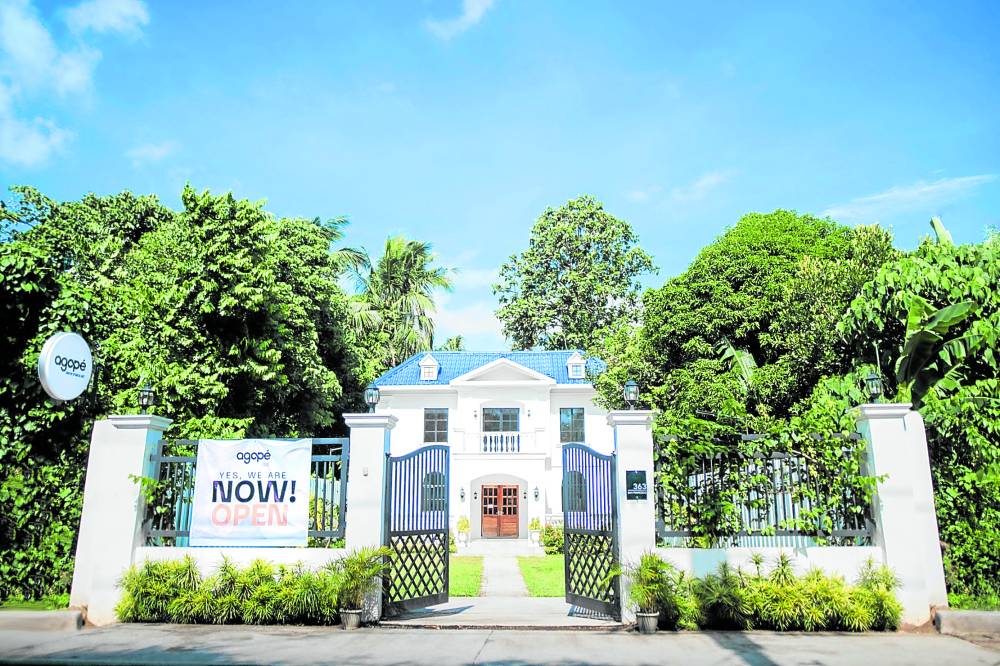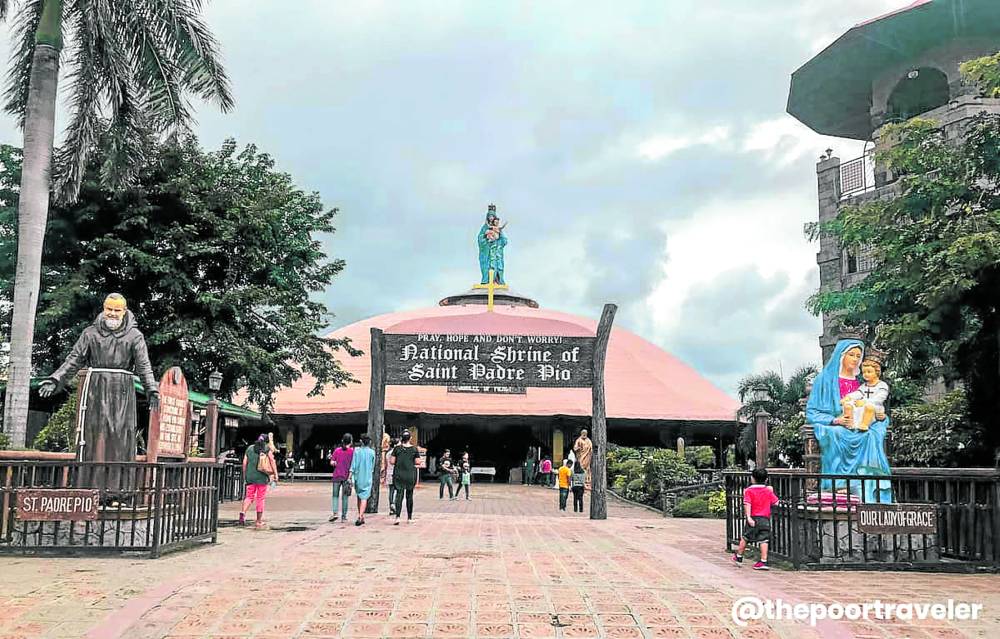While famed for its beaches, diving spots, and resorts, Batangas also serves as a gateway to rich culture and history.
In Lipa City and Sto. Tomas, for example, a number of tourist attractions stand out owing to their historic architecture, intricate designs, and captivating stories. If you’re planning to explore these cities, here are a few stops worth checking out.
Agape Cafe
Sto. Tomas
Situated along Lipa Road, Agape Cafe boasts a cozy atmosphere and a budding reputation online. Though it is barely a year old, having opened only last June 2024, the cafe enjoys a hearty social media presence, with several posts on TikTok showcasing its ambience and location.
Upon first glance, Agape looks more like a private house than a public establishment. With its pristine white walls and its own gate, you would never guess that it was ready to serve hungry customers.
But it seems that this facade works in its favor, brewing curiosity among visitors and giving off an air of sleek modernity. Its interior exudes the same vibes of stylish homeliness, featuring comfy couches, a spiral staircase, a fireplace, and even a billiards table.
Settle down in this homely cafe to work, study, or relax and socialize while enjoying a cup of coffee.
National Shrine of St. Padre Pio
Sto. Tomas
In the heart of Sto. Tomas lies one of its main attractions–the National Shrine of St. Padre Pio.
This serene sanctuary, which was first established in 2003 and declared as an archdiocesan shrine five years later, is the first shrine dedicated to St. Pio of Pietrelcina in the country, even having the honor of housing his heart relic in 2018. It is also a famous pilgrimage site.
Given how recently it was established, the shrine boasts a more modern leaning architectural design that can set it apart from other, older religious attractions across the country.
Even so, its stone walls and stained glass windows are reminiscent of similar shrines in the Philippines and still blend with its tranquil surroundings, fostering an atmosphere of reflection for all who visit.
Casa de Segunda
Lipa
This ancestral stone house—built circa 1880—met considerable damage during World War II in 1942, but was remodeled in 1956 by Paz Katigbak Luz vda. de Dimayuga, daughter of Manuel Luz and Segunda Katigbak-Luz. In 1996, Paz’s grandchildren restored the house to its original form and grandeur, with its fountain, fishponds, and orchards.
Parts of the stone house include the entrance which today serves as a receiving area where a portrait of Segunda, the Luz and Katigbak family trees, descendants’ photographs, and heirlooms are displayed. The black and white floor, typical of the 19th century, remains intact despite damages in other parts of the house during the war.
Up the grand staircase, the living room exhibits wood furnishings, heirlooms, paintings, and antique items. The sliding windows are made of capiz while the ventanillas below are baluster-protected, allowing breeze to flow in the house. A prayer area behind the staircase is also impressive with its locally made Batangas altar which displays statues of saints, heirlooms, and the family’s religious effects.
Apart from its structural integrity and restored design, the house also honors the memory of Segunda Solis Katigbak, known in history as the first love of national hero, Jose Rizal. The house was declared a heritage house in 1996 and remains a tourist favorite.
The Cathedral of San Sebastian de Lipa
Lipa
An eruption of the Taal volcano destroyed the first church buildings of the Parish of San Sebastian de Lipa.
Through the combined efforts of the Augustinians who administered the parish and the faithful people of Lipa, the church was initially completed in 1790, 20 kilometers away from the volcano.
Various reconstructions took place until the church perished again during the Siege of Lipa in 1898, the occupation of the church by the American troops from 1900 to 1902, and World War II.
In the 1950s, the church was restored close to its late 19th century look. The original five-story bell tower was added with two more plus a cupola. The eight-sided cupola over the crossing was then converted into a dome. Painting was done in the ceiling while the two sides of the church were expanded.
Today, churchgoers and tourists get to witness the majestic cathedral and its centuries’ worth of history embodied in its breathtaking architecture and design.
Sources: Casa de Segunda – The Luz-Katigbak Ancestral House Facebook page, herencialipena.com, batangasmagiting.com, tripadvisor.com.ph, pna.gov.ph, Agape Cafe’s Facebook page, Agape Cafe’s Instagram page, booky.ph, tiktok.com



